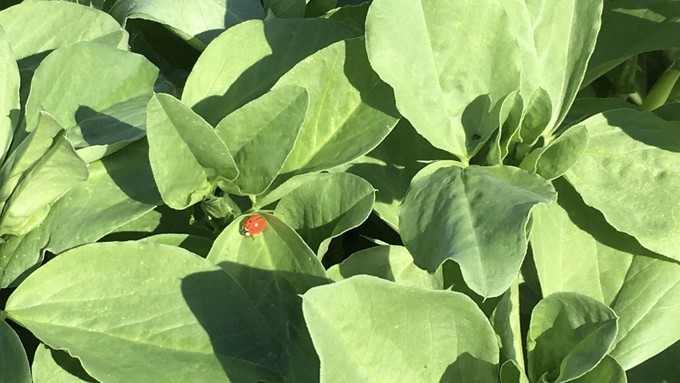
Free classes cover key areas of fall gardening

Bell beans make an excellent cover crop for a vegetable garden. Learn about growing cover crops Saturday in Placerville. Kathy Morrison
The El Dorado master gardeners present a full morning of seasonal gardening classes during their Fall Into Gardening event Saturday, Oct. 21, in Placerville
The free event runs from 9 a.m. to noon at the Sherwood Demonstration Garden, which includes 16 individual garden areas. The 30-minute classes, and their location at the garden, include:
-- 9 a.m., Pruning and Deadheading, in the Cottage Garden;
-- 9:30 a.m., Propagation, at the Pergola;
-- 10 a.m., Composting and Vermiculture, at Compost Central;
-- 11 a.m., Alliums (Onions, garlic, leeks), at the Vegetable Garden;
-- 11:30 a.m., Cover Crops and Cool Season Vegetables, Vegetable Garden.
Interested folks are welcome to attend one class or the whole morning, the master gardeners note. Kids activities, community booths and UCCE programs also will be part of the event.
The Sherwood Demonstration Garden is located at 6699 Campus Drive, Placerville. For more information on the El Dorado County master gardeners' activities, go to https://mgeldorado.ucanr.edu/
Comments
0 comments have been posted.Sacramento Digs Gardening to your inbox.
Sites We Like
Garden Checklist for week of April 21
This week there’s plenty to keep gardeners busy. With no rain in the immediate forecast, remember to irrigate any new transplants.
* Weed, weed, weed! Get them before they flower and go to seed.
* April is the last chance to plant citrus trees such as dwarf orange, lemon and kumquat. These trees also look good in landscaping and provide fresh fruit in winter.
* Smell orange blossoms? Feed citrus trees with a low dose of balanced fertilizer (such as 10-10-10) during bloom to help set fruit. Keep an eye out for ants.
* Apply slow-release fertilizer to the lawn.
* Thoroughly clean debris from the bottom of outdoor ponds or fountains.
* Spring brings a flush of rapid growth, and that means your garden is really hungry. Feed shrubs and trees with a slow-release fertilizer. Or mulch with a 1-inch layer of compost.
* Azaleas and camellias looking a little yellow? If leaves are turning yellow between the veins, give them a boost with chelated iron.
* Trim dead flowers but not leaves from spring-flowering bulbs such as daffodils and tulips. Those leaves gather energy to create next year's flowers. Also, give the bulbs a fertilizer boost after bloom.
* Pinch chrysanthemums back to 12 inches for fall flowers. Cut old stems to the ground.
* Mulch around plants to conserve moisture and control weeds.
* From seed, plant beans, beets, cantaloupes, carrots, corn, cucumbers, melons, radishes and squash.
* Plant onion sets.
* In the flower garden, plant seeds for asters, cosmos, celosia, marigolds, salvia, sunflowers and zinnias.
* Transplant petunias, zinnias, geraniums and other summer bloomers.
* Plant perennials and dahlia tubers for summer bloom.
* Mid to late April is about the last chance to plant summer bulbs, such as gladiolus and tuberous begonias.
* Transplant lettuce seedlings. Choose varieties that mature quickly such as loose leaf.